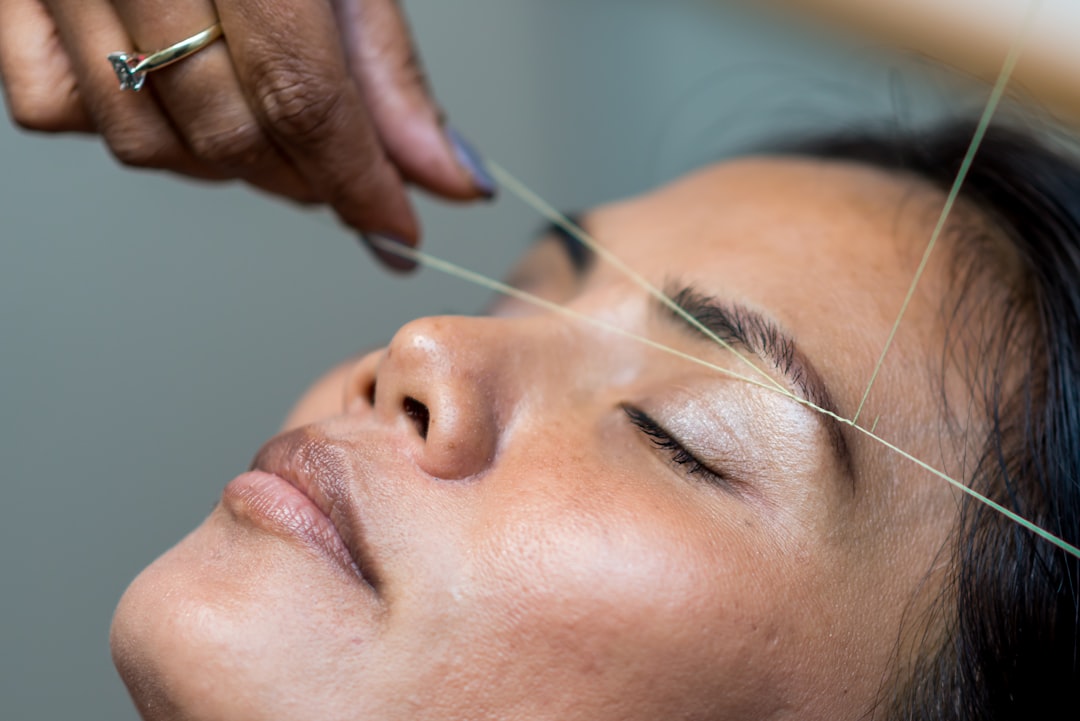Regular grooming is an essential aspect of pet care that goes beyond mere aesthetics. It plays a crucial role in maintaining the overall health and well-being of pets, particularly dogs and cats. Grooming helps to remove dirt, debris, and loose fur, which can accumulate and lead to skin irritations or infections if left unattended.
Moreover, regular grooming sessions provide an opportunity for pet owners to inspect their animals for any unusual lumps, bumps, or skin conditions that may require veterinary attention. This proactive approach can lead to early detection of health issues, ultimately contributing to a longer and healthier life for the pet. In addition to physical health benefits, grooming also fosters a strong bond between pets and their owners.
The act of brushing or bathing a pet can be a soothing experience for both parties, promoting trust and affection. Regular grooming routines can help pets become accustomed to handling, making them more comfortable during veterinary visits or other situations that require restraint. Furthermore, a well-groomed pet is often more pleasant to be around, as it reduces odors and minimizes shedding, creating a more enjoyable living environment for everyone in the household.
Key Takeaways
- Regular grooming is important for maintaining the overall health and appearance of your pet.
- Proper brushing and combing techniques are essential for preventing mats and tangles in your pet’s coat.
- When bathing your pet, use a gentle pet shampoo and ensure thorough drying to prevent skin issues.
- Regular nail trimming and ear cleaning are important for your pet’s hygiene and overall well-being.
- Choosing the right grooming tools, such as brushes and combs, is crucial for effective grooming and preventing skin irritation.
Brushing and Combing Techniques
The Art of Brushing Long-Haired Breeds
When it comes to long-haired pets, such as Afghan Hounds or Yorkshire Terriers, it’s essential to use a wide-toothed comb or a slicker brush to gently detangle knots and prevent breakage. Start brushing from the tips of the hair and work your way up to the roots to minimize discomfort for your pet.
Short-Haired Breeds Require a Different Approach
For short-haired breeds like Beagles or Boxers, a rubber curry brush or a bristle brush is more effective in removing loose hair and distributing natural oils throughout the coat. Brush in circular motions to lift away dead hair and stimulate blood circulation in the skin, promoting healthy skin and a shiny coat.
The Importance of Gentle Brushing
Regardless of your pet’s coat type, brushing should always be a gentle process. If your pet shows signs of discomfort or agitation, take breaks or use treats to create a positive association with grooming. With patience and practice, brushing can become a relaxing and enjoyable experience for both you and your pet.
Bathing and Drying Tips

Bathing is another critical aspect of grooming that helps maintain a pet’s hygiene. However, it is important to approach this task with care to ensure that it is a positive experience for the animal. Before bathing, it is advisable to brush the pet’s coat thoroughly to remove any tangles or mats that could worsen when wet.
Using lukewarm water is essential, as extreme temperatures can be uncomfortable for pets. Additionally, selecting a high-quality pet shampoo that is appropriate for the specific skin type—whether sensitive, dry, or oily—can make a significant difference in the outcome of the bath. After bathing, drying techniques are equally important.
While some pets may tolerate air drying, others may require more assistance. Using a towel to gently blot excess water from the coat can help speed up the drying process. For those pets that are comfortable with it, a low-heat blow dryer can be used; however, it is crucial to keep the dryer at a safe distance from the skin to avoid burns.
Some pets may find the sound of a blow dryer frightening, so introducing it gradually and using treats can help them acclimate. Ensuring that the pet is completely dry before allowing them outside is vital, especially in colder weather, as damp fur can lead to chills or other health issues.
Nail Trimming and Ear Cleaning
| Metrics | Results |
|---|---|
| Nail Trimming Frequency | Once every 4-6 weeks |
| Ear Cleaning Frequency | Once a week |
| Effectiveness | Reduces risk of infection and discomfort |
| Time Required | 5-10 minutes for each procedure |
Nail trimming is an often-overlooked aspect of grooming that is essential for a pet’s comfort and mobility. Overgrown nails can lead to painful walking conditions and even joint problems over time. It is recommended to trim nails every few weeks, depending on the pet’s activity level and natural wear on their nails.
Using specialized pet nail clippers or grinders can make this task easier and safer. It is crucial to avoid cutting into the quick—the sensitive part of the nail that contains blood vessels—so having styptic powder on hand can be helpful in case of accidental cuts. Ear cleaning is another vital component of grooming that should not be neglected.
Pets with floppy ears, such as Cocker Spaniels or Basset Hounds, are particularly prone to ear infections due to moisture retention and lack of airflow. Regularly checking and cleaning ears with a veterinarian-recommended solution can help prevent infections. The process involves gently wiping the outer ear with cotton balls soaked in the cleaning solution while avoiding deep insertion into the ear canal.
This routine not only keeps ears clean but also allows owners to monitor for any signs of infection or irritation.
Choosing the Right Grooming Tools
Selecting appropriate grooming tools is fundamental for effective grooming practices. The market offers an array of brushes, combs, clippers, and other tools designed for specific coat types and grooming needs. For instance, slicker brushes are excellent for detangling long-haired breeds, while bristle brushes work well for short-haired dogs.
Additionally, dematting tools are invaluable for pets prone to tangles; these tools have sharp blades designed to cut through mats without pulling on the skin. When it comes to clippers, choosing high-quality models designed specifically for pets is essential for achieving a clean cut without causing discomfort. Clippers should have adjustable blades to accommodate different coat lengths and thicknesses.
Furthermore, investing in grooming gloves can provide an alternative method for brushing while allowing for close contact with the pet. The right tools not only make grooming more efficient but also enhance the overall experience for both pet and owner.
Handling Mats and Tangles

Mats and tangles can be particularly troublesome for pets with long or thick coats. These knots can cause discomfort and even pain if not addressed promptly. The first step in handling mats is prevention; regular brushing can significantly reduce their occurrence.
However, if mats do develop, it is crucial to approach them with care. Using a dematting tool or slicker brush can help gently work through tangles without pulling on the skin. In cases where mats are severe, it may be necessary to cut them out carefully using blunt-tipped scissors.
It is vital to avoid cutting too close to the skin to prevent injury. If a mat is particularly stubborn or extensive, seeking professional help from a groomer may be advisable. Groomers have experience dealing with difficult mats and can often remove them without causing distress to the pet.
Grooming for Different Coat Types
Understanding how to groom different coat types is essential for effective grooming practices tailored to each pet’s needs. For example, double-coated breeds like Siberian Huskies require seasonal grooming due to their heavy shedding cycles. During shedding season, frequent brushing helps remove loose undercoat fur while preventing mats from forming in the topcoat.
Conversely, single-coated breeds like Poodles require regular clipping and trimming to maintain their distinctive appearance. Curly-coated breeds necessitate specific grooming techniques as well; their curls can trap dirt and moisture if not properly maintained. Regular brushing with a slicker brush helps keep their coats clean and free from tangles while also promoting healthy skin underneath.
Understanding these nuances allows pet owners to provide appropriate care tailored specifically to their pet’s coat type, ensuring both comfort and aesthetic appeal.
The decision between professional grooming services and DIY grooming at home often depends on various factors including budget, time availability, and the specific needs of the pet. Professional groomers possess specialized training and experience that enable them to handle complex grooming tasks efficiently and safely. They are equipped with high-quality tools and products that may not be readily available to pet owners at home.
Additionally, groomers are adept at managing anxious pets who may require extra care during grooming sessions. On the other hand, DIY grooming offers several advantages as well. It allows pet owners to bond with their pets during grooming sessions while also saving money in the long run.
Regular at-home grooming can help familiarize pets with handling and reduce anxiety associated with professional visits. However, it requires commitment and knowledge about proper techniques and tools specific to each breed’s needs. Ultimately, many pet owners find a balance between professional services for more complex tasks—such as clipping or de-shedding—and regular at-home maintenance routines that keep their pets looking and feeling their best.
FAQs
What are some basic pet grooming tips?
Some basic pet grooming tips include regular brushing to prevent matting and shedding, bathing with pet-friendly shampoo, trimming nails, cleaning ears, and brushing teeth.
How often should I groom my pet?
The frequency of grooming depends on the type of pet and its specific needs. Generally, pets should be brushed regularly, bathed as needed, and have their nails trimmed every 4-6 weeks.
What tools do I need for pet grooming?
Common grooming tools include a brush or comb suitable for your pet’s coat type, pet-friendly shampoo, nail clippers or a grinder, ear cleaning solution, and a toothbrush and toothpaste designed for pets.
Why is grooming important for pets?
Grooming is important for pets to maintain their overall health and well-being. Regular grooming helps prevent matting, reduces shedding, keeps skin and coat healthy, and allows for early detection of any skin or health issues.
Should I take my pet to a professional groomer?
Some pet owners prefer to take their pets to professional groomers for certain services, such as haircuts or specialized grooming needs. However, many basic grooming tasks can be done at home with the right tools and knowledge.
